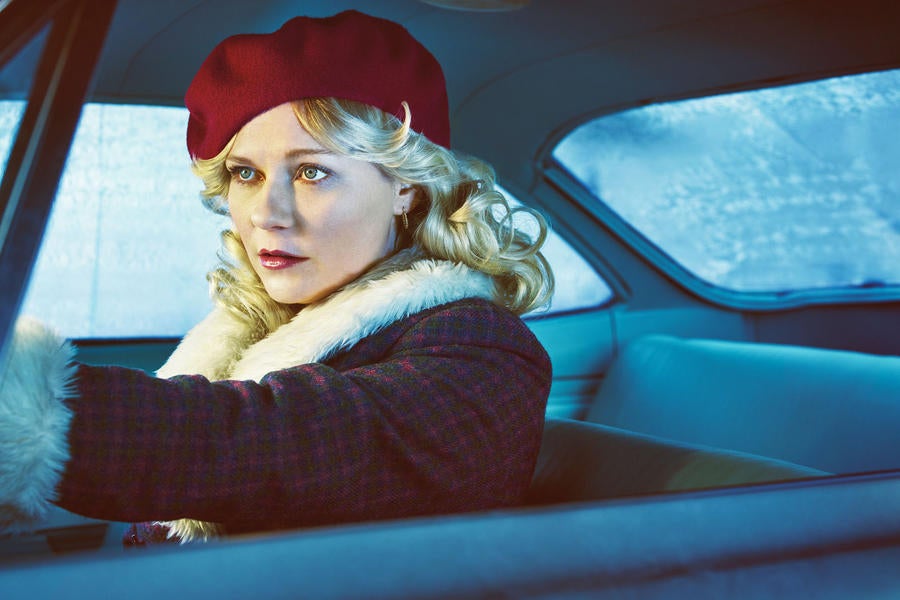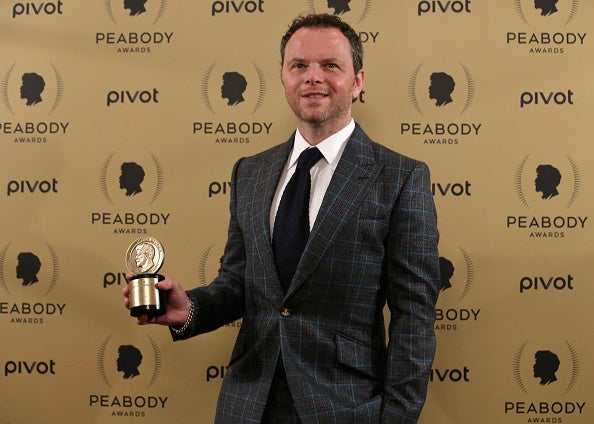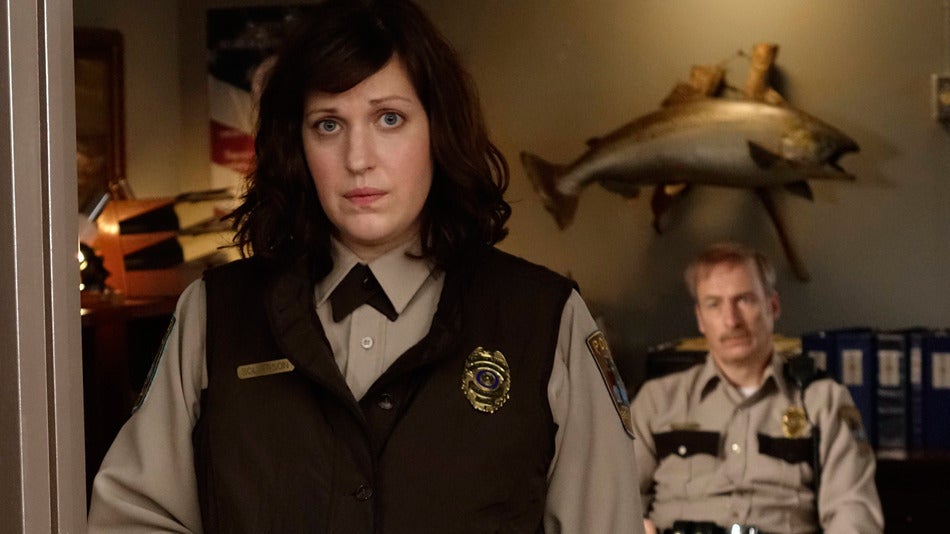Fargo season 2: Creator Noah Hawley talks the new era of American crime TV
This time it's more Mad Men, less Breaking Bad

Your support helps us to tell the story
From reproductive rights to climate change to Big Tech, The Independent is on the ground when the story is developing. Whether it's investigating the financials of Elon Musk's pro-Trump PAC or producing our latest documentary, 'The A Word', which shines a light on the American women fighting for reproductive rights, we know how important it is to parse out the facts from the messaging.
At such a critical moment in US history, we need reporters on the ground. Your donation allows us to keep sending journalists to speak to both sides of the story.
The Independent is trusted by Americans across the entire political spectrum. And unlike many other quality news outlets, we choose not to lock Americans out of our reporting and analysis with paywalls. We believe quality journalism should be available to everyone, paid for by those who can afford it.
Your support makes all the difference.You have to be more than a little brave to adapt one of the all-time great films for television, so credit Noah Hawley for doing it and doing it well.
Hawley, the 47-year-old creator and showrunner of Channel 4 drama Fargo, based on the Coen Brothers classic of the same name, is having himself something of a moment.
Fargo, his third and breakout TV project, is the toast of tinseltown, winning Emmys, Golden Globes, a Peabody award and even the approval of the veteran filmmakers who inspired it.
“We don't hug it out, but I’ve spoken to them about it and I know they’re happy,” he told The Independent in an interview ahead of the show’s return to UK screens.
Now neither the first season nor the new one are straight-forward adaptations of the 1996 Oscar-winner.
Sure there’s the Coen-esque moral dilemma, the familiar small-town vernacular and the famous snowy setting of the American midwest, but his characters are absolute originals.
And where last year was an intimate tale of a monster, his understudy and the detective hunting them, this year is bigger, more sprawling.
"It's more of an epic,” according to Hawley.
“I didn't necessarily set out to make something that big but it just happened that it was that big, and I'm a firm believer that there are no secondary characters."
Running through the intersecting storylines, he said: "We have a lot more moving pieces this year.
“There’s this Gerhardt crime family up in North Dakota fighting for their lives against a sort of corporate takeover by the Kansas City group, and then caught in the middle is small town Ted and Peggy, and as a result there's Detective Lou Solverson and his Sheriff father-in-law.

Watch Apple TV+ free for 7 days
New subscribers only. £8.99/mo. after free trial. Plan auto-renews until cancelled

Watch Apple TV+ free for 7 days
New subscribers only. £8.99/mo. after free trial. Plan auto-renews until cancelled
“There's a lot of moving pieces on a collision course."
What’s particularly compelling about Hawley’s take on the crime TV trope is that so many of these characters are essentially innocent; that the events of the series are exceptional and will shape and, in some cases, destroy the lives of ordinary people.
“In the dying gasps of the anti-hero where all our lead characters have become these tortured demon hunters who have had to give up any semblance of a normal life in order to keep the rest of the world safe, Fargo just has basically decent people who are probably in over their heads.
“They're faced with an evil that they don’t have the experience to cope with, and they're going to fight it so that they can go back to their normal lives.
“The reward that Frances McDormand gets at the end of the [Fargo] movie for seeing what she's seen and facing what she's faced is that tomorrow is another day.”
Now if you’re a Fargo fan you may recall that Lou, this year’s main cop played by Patrick Wilson, was a key character in the first season; He was the elderly diner owner (Keith Carradine) who gave cryptic clues about a horrific happening back in the late 1970s.
And that’s where we are in the new Fargo: “The lowest point in modern American history, post-Vietnam, post-Watergate, where the conspiracy did go all the way to the top, crime way up, a huge recession, the flower revolution having turned into radical revolt.”
The way Haley talks about the era suggests that the season will be a bit Mad Men where season 1 was a bit Breaking Bad.
"I found that I didn't want the year to just be a backdrop against which we told a crime story, I wanted to find a way to make the period into a crime story.”

The New York native is a real writer’s writer and was eager to talk about the process.
When the discussion turned to how he developed the series, he described the delicate line between adaptation and original, especially tricky during the conception phase.
“There's a moment,” he said and several seconds passed.
“For me there’s always a moment, one that starts us on our journey. My first vision was just this: Two men in an emergency room, one is a civilised man and one is the opposite.
“Now who are they? Where did they come from? That felt like a premise that would fit into this larger Coen Brothers sensibility.”
Apparently it wasn’t all that different this time around either.
“This year there was a similar dynamic, there was this catalytic moment.”

As a structuralist storyteller, Hawley stressed just how his series is unlike almost any other on American television — because it actually ends.
The first season had a definitive conclusion, and though it is linked to this season via Lou Solverson, Fargo is anthological.
"The most critical part is that you're telling a story with an end. You're making a movie, not a television show. And actually it's not even how a movie works either.
“A movie is only two hours and as a result it becomes a plot device. By the third act of a movie all you can do is really resolve all the stuff you established in the first two hours. When you have 10 hours you can take these digressions and focus on characters or parts of the story or create these turns that you can set up in ways that make the story unexpected.”
Ending is a writerly virtue to Hawley, so much so that he sees it as pretty much the starting point of story development.
"We always sit down and break the whole story before we start writing because when you know what the end is every step you take is a concrete step towards that end, and you're able to make really bold character choices.
“It's not just about killing people off. It's that characters serve their function, they play their part and move on. That's not how a TV show is designed, it's more of a perpetual motion machine.”
And he, along with a growing number of creatives like Matthew Weiner and Vince Gilligan, is challenging what the TV format can actually do.
Hawley and his fellow writers, he explains, are taking advantage of a TV landscape revolutionised by streaming services like Netflix, US cable giants like FX and AMC, and of course the stalwart HBO.
“There are so many programmers. And you're not just competing with another show that's on at the same time, you're competing with every show and movie ever made.
“The only thing you can do is make something original and better. So quality becomes the brand, which really makes it an artist's market.”
Fargo season 2 premieres on Monday October 19th on Channel 4
Join our commenting forum
Join thought-provoking conversations, follow other Independent readers and see their replies
Comments